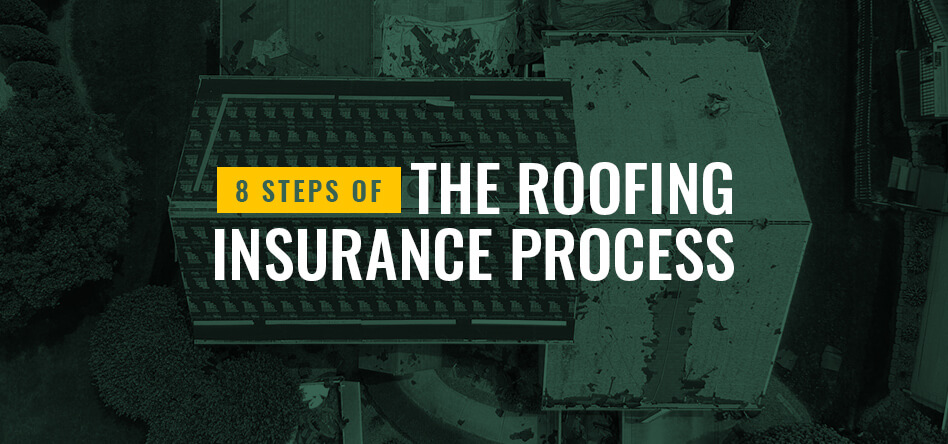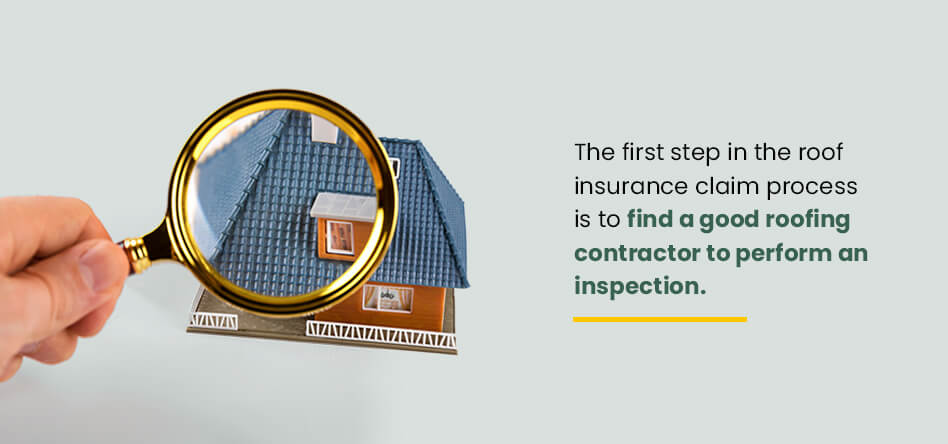
A properly maintained roof is essential to keep your home in good condition. Between harsh weather and debris from trees, you never know when an unforeseen event could expensive damage. To protect yourself from the cost of roof repairs and ensure your roof can protect your house, consider a homeowners insurance policy.
Most people purchase a homeowners insurance policy when they buy their homes — your mortgage company escrows the homeowners insurance into your monthly payment. If it’s not escrowed, you’re probably paying for the insurance separately, like car insurance.
What happens when it’s time for a roof replacement because of recent roof damage? When you have insurance, your first step should be to submit an insurance claim. This guide will detail the eight steps to file a roof replacement insurance claim.
The pre-approval process for your claim comes first and involves four steps. It involves understanding your policy coverages and the property damage.
When you notice damage to your roof, the first part of the insurance process is to review your policy and its coverages. If needed, you can request a copy of your policy from your insurance provider. Knowing what your policy covers will guide your decision about roof repairs.
Most insurance companies offer either roof repair or roof replacement coverage. Repair coverage typically reimburses you for a percentage of the repair cost. Replacement coverage covers the cost of a roof replacement.
Policies don’t always cover all types of roof damage, so it’s essential to know what yours covers. Contact your insurance agent to discuss your policy and its coverages in detail. You’ll want to know how long you have to submit your claim, too.

The first step in the roof insurance claim process is to find a good roofing contractor to perform an inspection. If you don’t find a contractor, you must use the one your insurance company provides. Hiring a contractor yourself ensures you receive an unbiased roof inspection from a professional third party.
The contractor will come out to your property to inspect it for damage. They’ll look for signs of wind, hail or storm damage and take numerous photos to document it. Total Roofing and Construction uses specialized software to find recent damage-causing events in your area.
This inspection, which takes one or two days, gives your contractor a complete understanding of the damage. Then, they can let you know if you should file a claim. You can ask your contractor to make temporary repairs to your home to prevent further damage. Ensure you save any receipts for supplies or repair costs so you can send them to your insurance company for reimbursement.
Your contractor may submit the claim on your behalf. Once they file it, you must sign an assignment of claim (AOC) form. The AOC allows your chosen contractor to discuss the claim with your insurance company, proceed with approved work and speak with the adjuster. The contractor should provide a claim number to you.
Once your contractor verifies the damage, an insurance adjuster will schedule an appointment with your contracting company to inspect the property together. During the inspection, your contractor will identify areas of damage and concern. It may take one to two weeks to schedule the inspection.
If the initial findings are unsatisfactory, your contractor may request a second inspection. The same adjuster, a different one or a third-party adjuster can complete the second inspection. This will also take about one to two weeks.
Getting the claim approved shouldn’t be an issue if your insurance company covers the damage that affected your property. Your contracting company will ensure they submit all the required documentation. Once your insurance approves the claim, there are four steps before repairs can begin.
Your roofing company will submit an estimate of the repair cost to your insurance company. Aside from repair information, the estimate includes manufacturer specifications, building codes and industry standards.
You should receive the first check within one to two weeks. This check is a down payment for the work and may have your mortgage company as a second endorser. This is because they have a financial interest in your home.
If your mortgage company is an endorser, you must mail them the check and a copy of the assignment of claim. Once they endorse the check, the work can begin. Lenders may put the money in escrow to pay for the repairs as the work progresses.
After you pay the deposit, the roofing company can apply for the building permit. You can select the colors and materials you want the company to use. If the materials are standard and in stock, you can schedule the repairs. The standard schedule is within one to two weeks from the order date. If you choose special, custom items, it may take three to five weeks to receive them.
If there are unforeseen issues during construction, the roofing company documents them with photos to send to your insurance. Your insurance company may send you the funds for extra work, which you can use to pay the contractor. If the insurance company doesn’t send you the funds, they include the cost of the additional work in the final payment.
The amount of time the repairs will take varies based on the needed work. Ask your contractor for an estimate on how long the repairs will take once the work begins.
Total Roofing and Construction has been providing customers with total satisfaction since 1985. We’re a family-owned and-operated roofing company servicing Illinois and Indiana. Our many services include residential roof replacement, roof repairs, commercial roof installation, siding replacement, window and door installation and gutter services.
We work with numerous manufacturers and regularly educate our team members on safety. Our certifications include Owens Corning and General Aniline & Film (GAF). When you’ve experienced storm damage or other types of issues, we can take the hassle out of your claim by helping you every step of the way.
Contact us to learn more about how we can help or schedule an appointment for a free inspection to discuss your repair options.